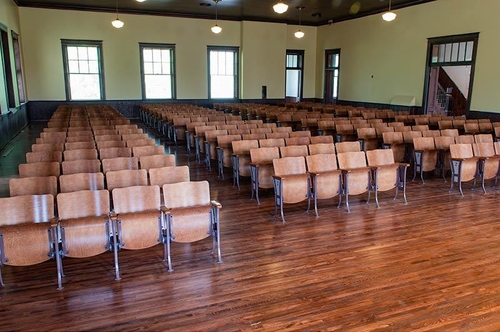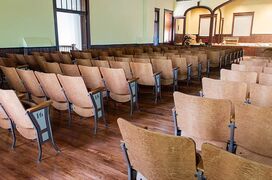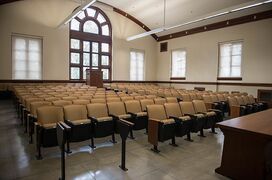Helping Clients Set Expectations For Their Space
By Anne Chapman
September 30, 2020

Whether it’s a brand new space or an update of a historic one, there's a lot to consider when planning a venue. Managing client expectations and balancing them with logistics and code requirements can be a difficult task. The key comes down to understanding what the client is working toward then making sure that the needs of every stakeholder are met.
Honoring The Client's Vision

In some cases, the client is starting with a brand new venue and wants to fill it with world class amenities to wow their audiences. In other cases, a historic theater is due for an update, and the client's wish is to restore it to its former grandeur. Clients will also have specific outcomes in mind when it comes to acoustics, seating styles, and the number of people a space can hold.
Designers, architects, and contractors start out by considering both the client's expectations and the realities of the space they are working with. Often, with some changes and compromises, the most important parts of the original expectations can be met while keeping a space both safe and functional.
Consider, for instance, the renovation of the Old Main Hall at Feed Hardeman University. The building was constructed in 1907 and is a designated National Historic Landmark. The seating in the Chapel Hall was installed sometime in the 1920s-30s. While this seating had beautiful decorative standards that the client wanted preserved, there were updates that needed to be made for both functionality and comfort. Irwin Seating Company stripped the standards down to bare metal, then added a sleek powder coating. We also refinished the armrests and added a space for new donor plates to honor those who contributed to the university. Finally, new seats and seat backs were added that echoed the shape of the originals, but they are a little wider for a more comfortable patron experience.
Creating The Best Guest Experience
Seating styles and configurations both have a strong impact on how enjoyable the space will be for visitors. Often, designers will be balancing historical preservation concerns, comfortable spacing, and ensuring that all guests have a clear and unobstructed view of the stage.
In historic auditoriums, for instance, you are most likely to see straight row seating. While the client may wish to keep the original seating arrangements, this is a configuration that has fallen out of favor in modern theater design. Often, straight row seating will lead to obstructed views, which can significantly impact audience experience. Switching to a curved form like continental seating or staggering rows for better visibility can preserve the historic feel while allowing audiences a better guest experience.
Making A Venue That Works For Everyone

Safety and ADA compliance are vital to an auditorium's design. Public spaces are required, by law, to meet certain accessibility and safety standards. For example, these standards include ensuring that seating is properly spaced to allow for fast and efficient evacuation in case of an emergency. In some spaces, this may require sacrificing some seating or selecting a different chair arrangement. Chair materials also need to be up to current flammability standards. Many historic fabrics are not, and will need to be replaced with materials that offer the fire safety that is needed.
Accessibility is also a strong requirement in public spaces. ADA requirements call for features like well-identified accessible seating and wheelchair spaces on accessible routes. We put our experience creating accessible spaces into play when assisting with the renovation of room 390 in UC Berkeley's historic Hearts Hall. The upgrade of the building included 156 Allegro Chairs supplied with 100 square-inch writing tablets. Our installation also included ADA swing-away panels to keep the design efficient while allowing for full accessibility.
Managing client expectations can take a combination of diplomacy, knowledge and an understanding of what makes a space work well for everyone involved. By considering the needs of every stakeholder involved in the space, designers, architects, and builders can update existing spaces and design new ones that balance what the client envisions with the experience of those who will be using that space day after day.